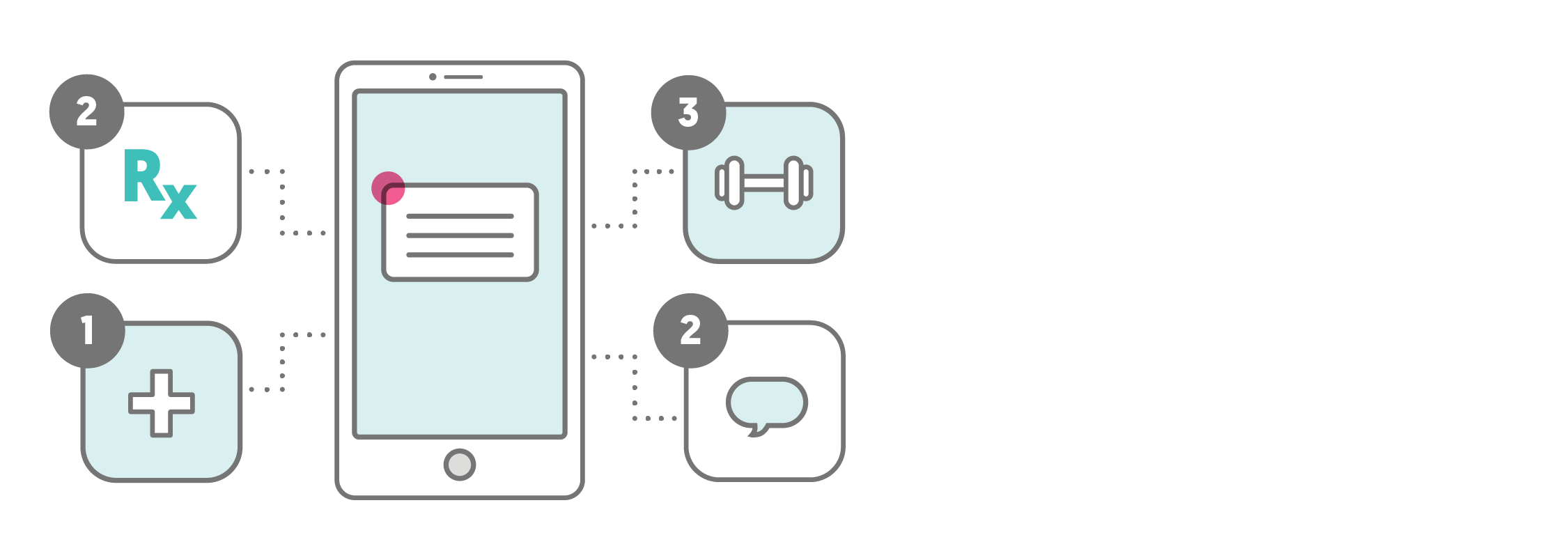Tech-Based Medication Adherence: Closing the Gaps
The World Health Organization estimates that on average, only 50% of patients take their chronic disease medications as prescribed. The result? In the United States, medication nonadherence is associated with 125,000 deaths, 10% of hospitalizations, and $100B in annual health care services. All because the real world gets in the way of patients taking medications as prescribed.
 Pharmaceutical companies, insurers, and healthcare providers have spent tremendous amounts of effort -- not to mention millions of dollars -- trying to help patients stay on course with medications. But it’s become increasingly challenging for healthcare providers to meet quality measures related to medication use while managing large, diverse, and complex patient populations.
Pharmaceutical companies, insurers, and healthcare providers have spent tremendous amounts of effort -- not to mention millions of dollars -- trying to help patients stay on course with medications. But it’s become increasingly challenging for healthcare providers to meet quality measures related to medication use while managing large, diverse, and complex patient populations.
Undoubtedly, a range of proposed solutions try to address these issues -- and as the healthcare system continues its transition toward an outcome-driven model, the pressure to do so will continue. However, in practice, many of these solutions leave critical gaps, ignoring the environmental, behavioral, and social factors that drive patients’ non-adherence. What the market -- and most importantly, patients -- need is an integrated intervention that accounts for the factors that keep people from adherence, and delivers personalized influence at the right time to achieve sustainable improvements.
 Hardware Solutions
Hardware Solutions
Some of the most common “solutions” to drive medication adherence are low-cost reminder devices like pillboxes, pill bottle strips with toggles and reminder caps. But multiple studies, including one from JAMA, demonstrate that these solutions do not drive improvements in medication adherence. They fail to provide immediate feedback, to alert patients about missed doses or track overall adherence -- all features that could improve medication-taking behavior. Recent hardware advancements enable real-time electronic monitoring with internet connected devices, alerting patients, healthcare providers, and family members of missed medication events. The high cost of these devices and the challenges of integrating the collected data within clinical care all present barriers to widespread implementation outside of research studies.
 Software Solutions
Software Solutions
The consequences of medication nonadherence for chronic conditions are projected in the timespan of years or decades, making it difficult for payers to justify the implementation of high-cost hardware solutions. So, many have turned to software and mobile applications to provide a cost-effective, scalable solution. Early market entrants (HealthPrize, MediSafe, and Mango Health) focus on developing mobile apps to address point problems like forgetfulness through medication tracking, financial incentives, or even by gamifying medication taking. While these technology-mediated interventions are scalable, they have also been unable to demonstrate clinical outcomes in peer-reviewed journals. Cost savings apps (GoodRx) that address financial barriers are successful in improving access to medications by increasing transparency on drug prices, copay cards, and patient assistance programs. However yet again, none of these solutions seek to address underlying behavioral or environmental issues (outside of cost) that are responsible for lack of adherence.
 Clinical Solutions
Clinical Solutions
One of the most frustrating aspects of medication non-adherence is that, in a high-touch clinical setting, we know an effective solution. Pharmacists follow a systematic process to assess all the potential barriers through Medication Therapy Management (MTM), a patient-centered approach to optimizing medication use and improving health outcomes in collaboration with the patient and other healthcare providers. Through an in-person or virtual consult, a pharmacist will individually assess a patient's medications to ensure that each medication is appropriate for the patient, effective for the medical condition, safe given the comorbidities and other medications being taken, and able to be taken by the patient as intended.
This approach focuses on motivational interviewing, enabling pharmacists to identify and deconstruct the mechanisms underlying adherence behavior. The intervention and solution are then built around the dynamic needs of the patient, which change over time with their lifestyles, medications, and conditions. In the states that have piloted MTM programs at scale, pharmacists have demonstrated value in reducing hospital admissions, emergency department visits, and total cost of care through proactive medication management. But widespread implementation of this practice is limited by pharmacist capacity (as well as industry incentives); without being reimbursed for clinical services, pharmacists cannot dedicate the necessary time to facilitate such an intensive intervention.
 Technology-Enabled Multi-Component Interventions Can Fill the Gaps
Technology-Enabled Multi-Component Interventions Can Fill the Gaps
So, how do we address adherence in a scalable, intensive manner for patients taking all types of medication? There can be one or (usually) multiple reasons why an individual isn’t taking medication as prescribed, and to date, most solutions offered by the market have failed at least one critical element.
The need for an integrated solution that’s able to deliver outcomes at scale has created a market opportunity for digital health. These interventions provide the continual personalized support of MTM; scale to address patients across the country, and remain cost-effective regardless of the medication type. As with all healthcare interventions, a well-designed one should start with science, and build on clinical best practices. Applying evidence-based approaches with demonstrated outcomes, we can leverage existing technologies to improve care coordination and empower (not replace) clinicians. By delivering real-time insights between office visits, intelligently-designed digital health solutions can enable more proactive care.
The key is to keep the user at the center -- no amount of fancy devices or gamification matters if you haven’t forged a connection with the patient, identified their barriers, and engaged them to build trust. Positive affirmation to build self-efficacy will deliver better results than an endless stream of automated notifications.
At Omada Health, we take a holistic approach, integrating connected devices for blood pressure, blood glucose, physical activity, and weight monitoring. We provide interactive dashboards that enable patients to be active participants in their own healthcare. We want individuals on the Omada Program to become more knowledgeable about, and responsible for, their medication self-management. Where external barriers exist, Omada coaches work with the patient to overcome them; where behavioral ones prevent adherence, we teach skills to build habits around medication-taking, as we do with any other health behavior. We apply machine learning to surface actionable insights to these coaches, who proactively reach out to patients, build trust, and develop strategies for success. In doing so, we endeavor to close the gaps in medication adherence, applying evidence based approaches to deliver an integrated experience that drives medication optimization, coordinated care, and cost savings.